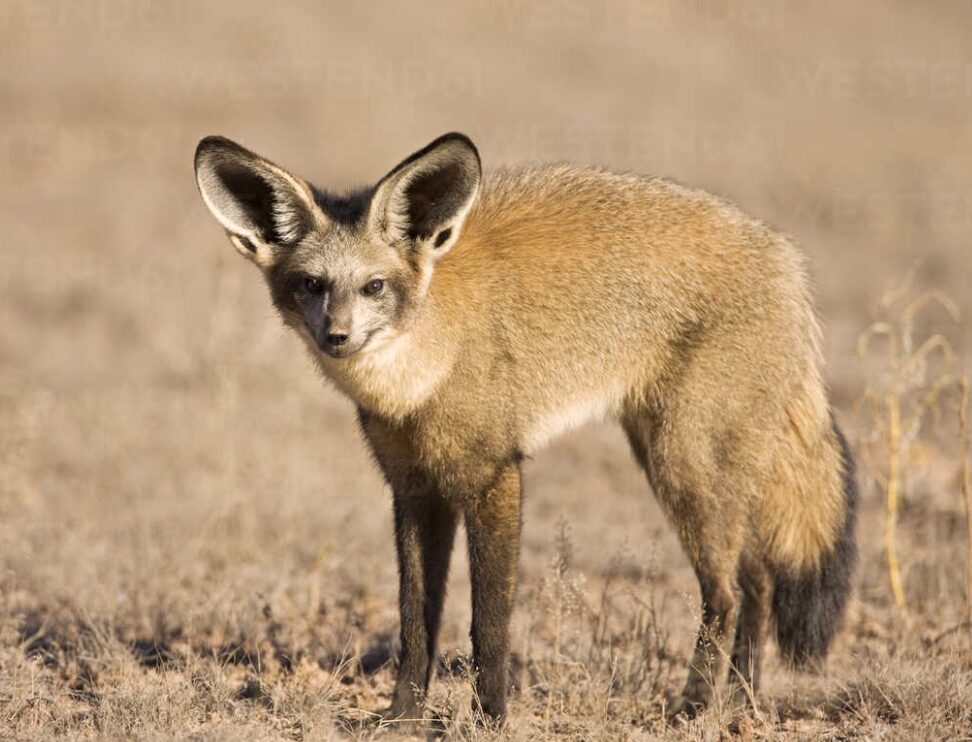Discovering the Shy Five on Safari
Sara • 08/07/2024
SHARE
It’s always wonderful to tick off the Big Five on Safari but it’s the little animals that aren’t often seen that can really make a safari that much more special. Africa’s rich biodiversity extends far beyond these famous animals. In the shadow of the Big Five, the Shy Five, consisting of the meerkat, aardvark, porcupine, aardwolf, and bat-eared fox offer a unique and fascinating glimpse into the diverse tapestry of African wildlife.
Have you heard of these shy animals?
The Meerkat: Social and Vigilant
Meerkats, also known as suricates, are small carnivorous mammals belonging to the mongoose family. Found primarily in the arid regions of southern Africa, these charismatic animals are known for their highly social behavior and complex family structures. Meerkats live in groups called mobs or gangs, typically consisting of 20 to 50 individuals.
Their cooperative lifestyle is one of their most remarkable traits. Meerkats take turns standing guard, watching for predators such as eagles and jackals while the rest of the group forages for food. This vigilant behavior ensures the safety of the entire mob. Meerkats communicate using a variety of vocalizations, making them one of the most communicative mammal species in the animal kingdom.

The Aardvark: Africa’s Earth Pig
The aardvark, or “earth pig” in Afrikaans, is a nocturnal mammal known for its burrowing habits and unique appearance. With a pig-like snout, rabbit-like ears, and a kangaroo-like tail, the aardvark is a true testament to the diversity of nature. Aardvarks are primarily insectivores, feeding almost exclusively on ants and termites.
Using their strong limbs and powerful claws, aardvarks dig extensive burrows for shelter and foraging. Their keen sense of smell helps them locate termite mounds and ant colonies, which they access by using their long, sticky tongues to extract their prey. Despite their solitary nature and nocturnal habits, aardvarks play a crucial role in their ecosystems by controlling insect populations and providing burrows for other animals to use.

The Porcupine: Armored Herbivore
Porcupines are easily recognizable by their coat of sharp quills, which serve as a formidable defense against predators. These quills, which can be raised and rattled when threatened, are their primary means of protection. Porcupines are nocturnal herbivores, feeding on a diet of roots, tubers, bark, and fruits.
In Africa, the Cape porcupine is the most common species, inhabiting a range of environments from forests to savannas. Despite their fearsome appearance, porcupines are relatively slow-moving and rely on their quills to deter predators. They are also known for their strong teeth, which they use to gnaw on hard substances like bones and tree bark to keep them sharp and healthy.

The Aardwolf: Termite Specialist
The aardwolf, a small, nocturnal mammal, is a member of the hyena family but differs significantly in its diet and behavior. Unlike its larger, carnivorous relatives, the aardwolf is an insectivore, feeding almost exclusively on termites. With its slender build and delicate features, the aardwolf is well-adapted to its specialized diet.
Aardwolves have a unique way of foraging; they use their long, sticky tongues to lap up termites from the ground. Their low metabolic rate allows them to survive on a diet that provides relatively low energy. Aardwolves are solitary or live in monogamous pairs, often inhabiting burrows abandoned by other animals, such as aardvarks.

The Bat-eared Fox: Insect Hunter
Named for their large, bat-like ears, bat-eared foxes are small, nocturnal mammals that inhabit the grasslands and savannas of eastern and southern Africa. These ears are not just for show; they play a crucial role in locating insects, which make up the majority of their diet. Bat-eared foxes have exceptional hearing, allowing them to detect the sounds of insects moving underground.
Their diet primarily consists of termites, beetles, and other small invertebrates, but they also consume fruits and small vertebrates. Bat-eared foxes live in small family groups and exhibit a high degree of parental care, with both parents involved in rearing their young. Their social behaviour and dietary specialization make them unique among Africa’s carnivores.

